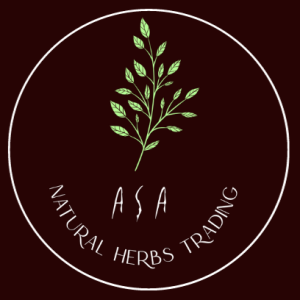Our Products
Featured Products
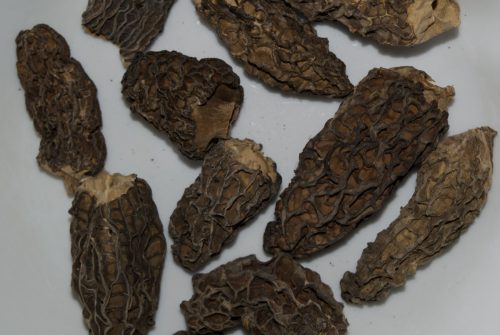
Morel Mushroom
Botanical Name: Morchella esculenta
Morel is a seasonal wild edible mushrooms with a unique earthy and nutty flavor. They are found around the base of apple and pine trees in Kashmir Valley, Karakoram, and Himalaya Mountain ranges and in the Northern area of Pakistan in Hindu Kush. Their hunts start in spring and early summer when the snow melts and soil become soft and moist. Fresh Morels are then dried in sunlight or indirectly in a room heated by burning woods.
Uses/ Benefit:
- Rich in nutrients
- Great in taste in cuisine
- Good for liver health
- Antioxidant
- Help in the prevention of cell proliferation in Cancer.

Saffron
Botanical Name: Crocus sativus
Saffron is an herb with a unique color and intense aroma. Saffron is rich in antioxidants, which have many health benefits. Saffron spice is collected from the dried stigma of Crocus flowers. Farmers gather the flowers and then collect the threads from each flower by hand. These threads are then heated and cure to bring the distinctive flavor of Saffron. Saffron mainly grows in Iran, Morocco, India, and Afghanistan on a large scale.
Uses/ Benefit:
- Antioxidant
- Improve mood & Treat Depressive Symptoms
- Having Cancer-fighting properties
- Reduce Premenstrual syndrome symptoms
- Act as Aphrodisiac

Kutki
Botanical Name: Picorrhiza kurroa
Kutki is a small ceaseless herb and usually grows up to 20-30cm in height. This plant’s root is tubular, elongated, and straight or slightly curved, with few longitudinal and dotted scars, mostly attached to rhizomes.
The botanical name of Kutki is Picorrhiza kurroa. It is found in the Himalayas range of India, Pakistan, Kashmir, China, and Bhutan.
Uses/ Benefits:
- Clean liver from toxin
- Decongests bile and liver ducts
- Help in making healthy external skin
- Encourage gallbladder, liver, and intestinal detox
- Maintain healthy lymphatic and immune function
Aconite Root
Botanical Name: Aconitum napellus
Aconite is a ceaseless plant that grows up to 0.6 to 1.5m in height. Its flowers are blue or purple and helmet-shaped. The botanical name of Aconite Root is Aconitum napellus. It is found in many parts of Asia, Europe, Africa, America, and Canada.
Uses/ Benefits:
- For the improvement of heart and kidney function
- Feeling of coldness in hand and feet
- Nerve pain
- Joint pain
- Inflammation
- Wounds

Nagchatri
Botanical Name: Trillium govanianum
Trillium govanianum is a high-value medicinal herb belonging to the family Melanthiaceae and is mainly distributed from Kashmir, Pakistan, Bhutan between the altitudinal ranges of 2500–4000 metres above sea level across the Himalayan region.
Uses/ Benefit:
- To cure the disease of
- dysentery,
- wounds,
- skin boils,
- inflammation,
- sepsis,
- menstrual and sexual disorders
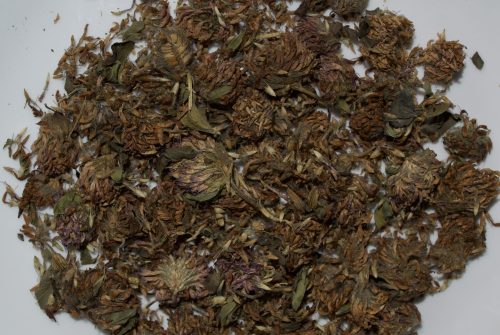
Red Clover
Botanical Name: Trifolium pratense
Trifolium pratense, Red Clover is a herbaceous species of flowering plant in the bean family fabaceae, native to Europe , western Asia, and north west Africa.
Uses /Benefits:
- Red clover is promoted as a treatment for a variety of human maladies, including symptoms of menopause, cough, disorders of the lymphatic system and a variety of cancer. There is some evidence it may reduce the frequency of hot flushes in menopausal women.
Kakra Singi
Botanical Name: Pistacia Integerrima
Kakdaseengi is found in the Himalayas, Kashmir, Sikkim to Bhutan mountain range at 600 to 2500 meters. Its botanical name is Pistacia Integerrima J. L. Stewart, ex Brandis. A different word is used for Kakdaseengi in a foreign language.
Uses/ Benefits:
- Fever
- Ant allergic
- Immunity Booster
- Digestive disorder
- Diarrhoea
- Hepatitis and liver problems
- Blood purifier
Neetles
Botanical Name: Urtica dioica
Urtica is a genus of flowering plants in the family Urticaceae. Many species have stinging hairs and may be called nettles or stinging nettles, although the latter name applies particularly to Urtica dioica.
Urtica species grow as annuals or perennial herbaceous plants, rarely shrubs. They can reach, depending on the type, location and nutrient status, a height of 10–300 centimetres (3.9–118.1 in). The perennial species have underground rhizomes. The green parts have stinging hairs. Their often quadrangular stems are unbranched or branched, erect, ascending or spreading.
Uses/Benefits:
They stimulate the production of nitric oxide, a vasodilator, which helps blood flow more easily through the blood vessels. Nettles also contain compounds that block calcium channels. In turn, this can help to relax our hearts and reduce our blood pressure.
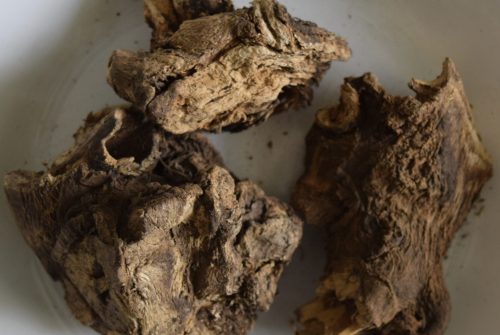
Belladonna roots
Botanical Name: Atropa belladonna
Atropa belladonna is a branching herbaceous perennial rhizomatous hemicryptophyte, often growing as a subshrub from a fleshy rootstock. The root of the plant is generally the most toxic part, though this can vary from one specimen to another. The active agents in belladonna, atropine, hyoscine (scopolamine), and hyoscyamine, have anticholinergic properties.
Uses/Benefits:
Belladonna has been used in herbal medicine for centuries as a pain reliever, muscle relaxer, and anti-inflammatory, and to treat menstrual problems, peptic ulcer disease, histaminic reaction, and motion sickness.

Anise seed
Botanical Name: Pimpinella anisum
Anise seeds are the seeds of the anise plant (Latin name Pimpinella anisum), which is a flowering annual that’s native to the eastern Mediterranean region and Southwest Asia.
Uses/Benefits:
- Rich in Nutrients.
- May Reduce Symptoms of Depression.
- Could Protect Against Stomach Ulcers.
- Prevents the Growth of Fungi and Bacteria.
- Could Help Relieve Menopause Symptoms.
- May Balance Blood Sugar Levels.
- Can Reduce Inflammation.

Milk Thistle
Botanical Name: Silybum marianum
Whole milk thistle seeds are obtained from Silybum marianum, a Mediterranean herb commonly called Holy Thistle, Lady’s Thistle and Blessed Thistle. While the seeds are most frequently used to make teas, tinctures and infusions, they can also be as food. Milk thistle (Silybum marianum (L.) Gaertner, Asteraceae) is an annual or biennial that grows from 5 – 10 feet (1.5 – 3.0 m) tall, has large prickly-edged leaves covered with undulating white patches, and stems containing a milky juice.
Benefits-
- Milk Thistle Protects Your Liver.
- It May Help Prevent Age-Related Decline in Brain Function.
- Milk Thistle Could Protect Your Bones.
- It May Improve Cancer Treatment.
- It Can Boost Breast Milk Production.
- It Could Help Treat Acne.
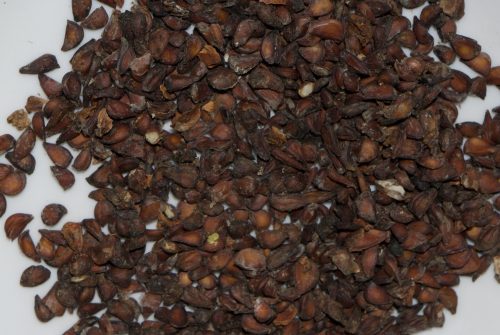
Quince Seeds
Botanical Name: Cydonia oblonga
The quince is a monotypic genus comprising the family Rosaceae, subfamily Maloideae and genus Cydonia (USDA, 2009). The quince plant grows as a shrub or small tree (4–6 m high) and is rounded by a canopy up to 3 m in diameter.
Uses/Benefits:
The seed is used as medicine. People take quince as a powder, extract, or tea for digestive disorders including stomach and intestinal pain (gastrointestinal inflammation), as well as diarrhea. Quince is also used for cough.
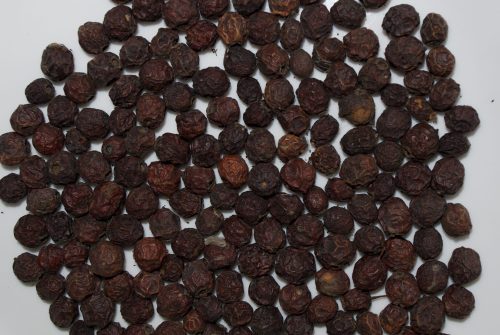
Hawthorns Crataegus Berries
Botanical Name: Crataegus chrysocarpa
Hawthorn (Crataegus oxyacantha; family Rosaceae), also known as whitehorn, maybush, or haw, is a fruit-bearing shrub consisting of bright red berries, white flowers, and bright green leaves. It is native to North America, Asia, Europe, and Northern Hemisphere temperate regions.
Uses/Benefits:
Hawthorn is used to help protect against heart disease and help control high blood pressure and high cholesterol. Both animal and human studies suggest hawthorn increases coronary artery blood flow, improves circulation, and lowers blood pressure. It has also been used on the skin to treat boils and skin sores.
Ban Kakri
Botanical Name: Podophyllum hexandrum
Ban Kakri is also known as the Himalayan apple, is a plant found in the Himalayan range of Pakistan, Afghanistan, China and India. Ban kakri plant is located in the meadows and moist, forest shaded slop at an altitude of 2600-4500 m. The root and underground stem (rhizome) of this plant are used for medical purposes.
We provide Ban kakri that we collected from the Himalayan range of Pakistan area such as Gilgit, Skardu, Allai Valley and About Abad.
Uses/ Benefit:
- Used for the treatment of hepatic and gestic problems
- Gynecological disorder.
- Chronic constipation.
- For the treatment of skin diseases such as warts and tumours.
- Anti-cancer properties.
Salam Panja
Botanical Name: Dactylorhiza Hatagirea
Salam Panja or Salab Panja is a herb, and the botanical name for this herb is Dactylorhiza Hatagirea. This herb grows in the high altitude mountain climate of Western and Central Himalayas, where the temperature is exceptionally harsh, mainly below the freezing point.
Different names are used for this herb in various regions, such as Salem Panja in Kashmir, March Orchis in Europe, and Ambolakpa in Ladakh.
Uses/ Benefits:
- For the treatment of Erectile dysfunction
- Treatment of Libido Loss
- Treatment of Sexual Debility
- Treatment of Premature Ejaculation
- Treatment of skin wounds and ulcers
Deer Musk
Botanical Name: Moschus moschiferus
Deer Musk is a chemical that is made from the male musk gland of Musk Deer. It is then dried and used in medicine, in food it is used as a flavouring, and in manufacturing, musk is used in perfumes and fragrances.
Our Deer Musk is from Pakistan, Kashmir, Gilgit and Astor Himalayan mountain.
Uses/ Benefits:
- Coma
- Stroke
- Nerve Problems.
- Perfumes and Fragrances.
- Food flavouring.
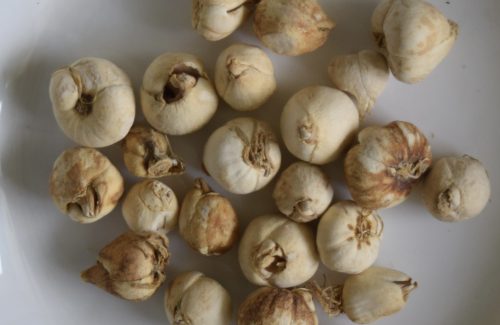
Fritillaria
Botanical Name: Fritillaria Cirrhosa
Fritillaria is a perennial flowering plant and is a part of the lily family. It is found on mountain slopes of Kashmir, Nepal,China,and Pakistan. The botanical name of Fritillaria is Fritillaria Cirrhosa, and in Chinese, its name is Chuan Bei Mu.
Uses/ Benefit:
- Choroidal Neovascular Membrane
- Cough
- Respiratory Diseases
- Cancer
- High blood pressure
- Lung diseases
- Sore Throat

Ashwagandha
Botanical Name: Withania somnifera
Withania somnifera, known commonly as ashwagandha or winter cherry, is an evergreen shrub in the Solanaceae or nightshade family that grows in India, the Middle East, and parts of Africa. Several other species in the genus Withania are morphologically similar.
The plant, particularly its root powder, has been used for centuries in traditional Indian medicine. Although used in herbal medicine and sold as a dietary supplement, there is insufficient scientific evidence that somnifera is safe or effective for treating any health condition or disease.
Uses/ Benefits:
- Relieves stress and anxiety
- Lowers blood sugar and fat
- Increases muscle strength
- Improves sexual function women
- Boosts fertility and testosterone levels in men
- Sharpens Focus and Memory
- Supports Heart health

Himalayan Shilajit
Botanical Name: Asphaltum Punjabianum
Our second most liked product is
Himalayan Shilajit. Shilajit, also known as mumiyo or mumie, is an organic mineral compound found in the Himalayan mountains, as well as mountainous regions in Russia, Afghanistan, Chile, and elsewhere. This naturally occurring, blackish-brown resin contains over 40 minerals and substances, most notably fulvic acid.
For many years, shilajit has been used in traditional Ayurvedic medicine in Nepal and India.
Uses/ Benefits:
- Improves sexual
stamina and energy - Improve the testosterone level
- Enhance male fertility
- Boosts immunity
- Has Anti-inflammatory and Antioxidant effects.
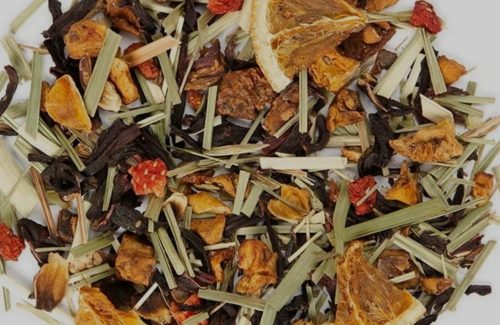
Organic Tea
Compared to regular tea, organic tea
contains more antioxidants, which are
excellent for your health. Boosts your
immune system, reduce the risk of
heart disease and give your skin a
natural glow
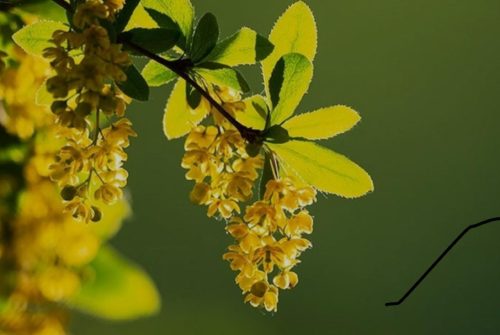
Berberine
Berberine is a compound in several
plants. It may help to treat diabetes,
high cholesterol and high blood
pressure among other conditions. It
has been a part of Indian and
Ayurvedic medicine for thousands of
years.
Useful Links
Contact
Call Us +971 52 767 4259, +91 95991 17548
Email info@asanaturalherbstrading.com
Designed By Arshima
